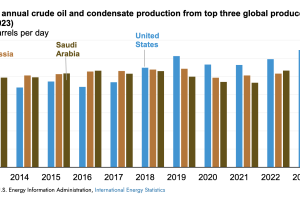Tesla’s price cuts and their shockwaves

Tesla’s price cuts in China send ripples throughout the market; The details behind the price adjustments and the potential effects and bit more…
Big news:
Tesla just pulled a rabbit out of its hat by slashing prices on its popular Model Y long-range and performance versions in China, starting August 14. This move sent Tesla’s stock on a bit of a roller coaster ride due to worries about how it could affect the company’s profitability.
What’s Happening?
Tesla gave its prices a serious makeover by knocking off 14,000 yuan (approximatelly $1,934.58) from the price tags of both the Model Y Long Range and the Performance editions. The Model Y Long Range received a 4.5% price cut, while the starting price of the Model Y Performance was adjusted down 3.8%.
But there’s more!
Tesla extended its offerings by providing insurance incentives for customers in China. Between August 14 and September 30, buyers interested in the entry-level, rear-wheel-drive versions of the Model 3, are in for a treat—Tesla’s sliding an 8,000 yuan insurance subsidy into the mix.
However, this move sparked questions about Tesla’s stance on pricing consistency. Last month, they joined forces with other Chinese companies, promising to avoid engaging in price fluctuations in an “abnormal” way, creating an impression that the price war might be taking a timeout.
What does all of this mean?
The repercussions of Tesla’s actions were not confined to China alone. Observers speculated that similar price adjustments could be in the pipeline for Tesla’s offerings in the U.S. and Europe, which could put a bit of pressure on Tesla’s margins for the third quarter.
Tesla’s shares, already dropped by 2.7% to hit $236.15—a two-month low—in the blink of an eye.
Last time around, Tesla’s CEO Elon Musk hinted that more price cuts could be on the horizon. Even if it meant their profit margin had to squeeze into skinny jeans, so to speak.
July numbers painted a less shiny picture for Tesla:
The company’s bold pricing maneuvers contrasted with the less favorable market conditions it faced in July, when sales of China-made Tesla vehicles plummeted by 31% compared to the previous month. This sharp decline, reported by the China Passenger Car Association (CPCA), marked the first month-to-month drop since December.
Tesla’s pricing shifts aftermath: 🚗💨
Wall Street’s main indices slipped due to Tesla’s decline, while investors awaited earnings from U.S. retail giants and upcoming economic data for consumer spending insight. Tesla dropped 3.2%, affecting S&P 500 and Nasdaq.
Meanwhile:
→China’s property sector concerns persisted, with Country Garden delaying bond payment.
→ U.S.-listed Chinese firms like Alibaba, Baidu, and Nio fell.
→ Higher producer prices fueled Fed rate concerns, pushing up Treasury yields and impacting tech stocks.
→ Dow Jones down 0.31%, S&P 500 down 0.22%, Nasdaq down 0.22%.
→ PayPal rose 1.4% with new CEO announcement, while
→ AMC fell 39.2% due to stockholder settlement approval.
→ Nikola dropped 10% over electric truck recall, and
→ U.S. Steel rose 23.9% after rejecting buyout offer.
→ Declining issues surpassed advancers on NYSE and Nasdaq.
Focus this week:
→ earnings from Walmart, Target,
→ retail sales data,
→ industrial production, and
→ jobless claims numbers.
* → Greedflation: presents an intriguing departure from conventional economic explanations of inflation.This concept suggests that profit-oriented businesses hold a substantial influence over the inflationary pressures experienced within economies. This novel perspective gains traction in the backdrop of current economic trends, particularly in regions like Europe and the United States.
However, the “greedflation” concept prompts us to question whether assigning inflation solely to corporate avarice paints an accurate picture or oversimplifies a complex economic reality.
TRENDING ORIGINALS
Never Miss What’s Happening In Business and Tech
Trusted By 450k+ Readers







